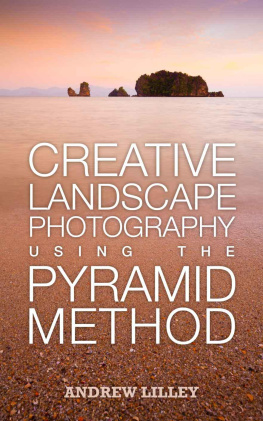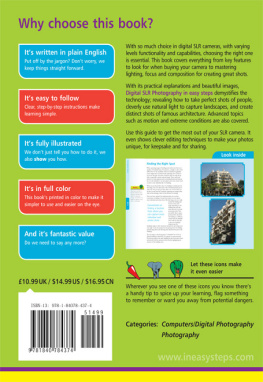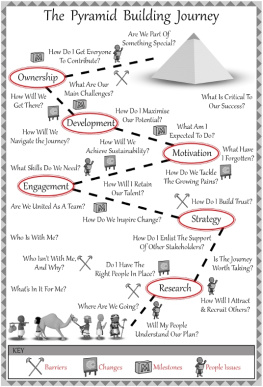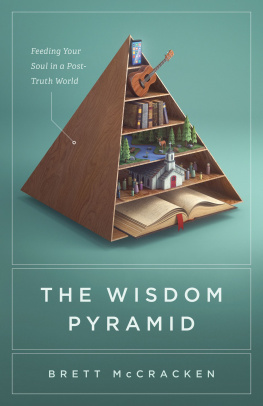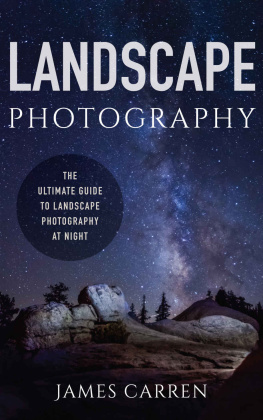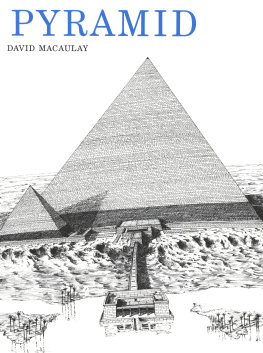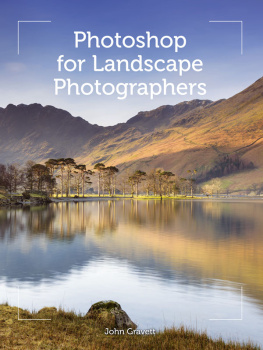Copyright 2015 Andrew Lilley
All rights reserved. No part of this publicationmay be reproduced, distributed, or transmitted in any form or by any means,including photocopying, recording, or other electronic or mechanical methods,without the prior written permission of the author, except in the case of briefquotations embodied in critical reviews and certain other non-commercial usespermitted by copyright law.
First edition
Contents
About the author
Although landscape and nature photography his passion, Andrew Lilley's full-time job is an interaction designer. As part of this job, he designs better products by systematically mapping out the things people do when using them, and then reassembling these steps into an optimised workflow. These work tasks are recorded in a hierarchy, much like this book's Pyramid Method!
Andrew has been taking landscape and nature photographs for over twenty years, and markets his photos through a number of agencies. Being a perfectionist, he enjoys refining his work past what many consider acceptable, whether they're e-books, photographs or computer interfaces.
For this e-book, he combined his professional skillsdocumenting the steps people do as part of their job and designing an optimised systemwith his experience and knowledge of landscape photography.
Creative Landscape Photography Using the Pyramid Method is the outcome of 18 months of interviewing, researching, analysing, brainstorming, head-scratching, distilling, scribbling, sketching, frowning, refining and tweaking.
Although English, Andrew lives in beautiful Norway, along with his Norwegian partner Ingvild, two smiley children, Nicholas and Maia, and one crazy cat.
Preface
As a keen landscape photographer, you probablyhave a passion for nature and the outdoors, and have a strong desire to captureits beauty. You want to convert the landscape you see with your own eyes intoan evocative image that stimulates the viewers imagination. Maybelacking slightly is the insight into how best to convert the landscape intothis wonderful image.
This book takes a different approach to otherphotography how to guides.It aims to be a highly usable guide that firstly gives you the knowledge that helpsyou be more perceptive, resourceful, and creative. Secondly, it provides asystematic methodology in which to apply that knowledge.
Ive mapped out the steps performed by many professionallandscape photographers, from the very start of a project through to thefinishing touches to the chosen image on the computer, and captured them in astep-by-step framework I call the Pyramid Method.
The Pyramid breaks down theseessential tasks into easy to follow, foolproof steps that anyone can applyevenbeginners. All that the Pyramid Method assumes is that the reader has a camerasystem that uses interchangeable lenses (either a digital SLR, or a mirrorlesscamera system) and some camera accessories.
From idea to image
It may or may not come as a surprise to you thatthe best landscape photographs are born from being researched and planned, longbefore the photographer leaves the house. He or she identifies the generalsubject of the photo and the feelings it should convey. They also identify exactlywhere to go to get the shot, and when. These preparation and planning stepstake away much of the risk of coming back empty-handed, and I explain how bestto do this in the first two levels of the Pyramid.
In levels three and four, the Pyramid begins todescribe what to do while out in the field. I include how to find and use the most suitable foreground andbackground elements of the photo, which camera settings you should select, andhow best to compose the photo. Foolproof techniques are described that shouldguarantee you end up with a beautifully framed scene, suitably matching the criteriayou identified from the earlier steps of the Pyramid.
The penultimate level of the Pyramid shows youwhat you should do in order to actually capture a well-exposed, pin-sharpimage. It explains what you should look for when evaluating the stored image onthe camera, and how to improve on it in successive shots.
The final level of the Pyramid covers the sixessential steps you should take when you return home with your magical shot,before you even think about showing it off. The importance of refining theimage on the computer (the digital darkroom) is often overlooked, and I outline why its as important as anyother part of the process. I also show in clear steps what must be done as aminimum to turn a mere image of a landscape into a picture thats ready to beexhibited, whether displayed on a screen or hung on a wall.
In this book, you will:
- Discover the importance of planning andpreparation
- Understand the background and reasons for eachstep
- Learn the practical techniques involved
- Find foolproof methods and settings to use tovirtually guarantee success
- See checklists that quickly help you understandwhats required
- View diagrams and examples illustrating the differentsteps
- Follow detailed case studies for each level
- Get links to useful resources
I believe that by following the Pyramid Method fromtop to bottom, you are guaranteed to greatly improve your landscape photographyand gain an extremely strong foundation from which to further develop yourcreative and technical photography skills. Many of these skills will also beuseful for other photography genres.
How to use the Pyramid Method
Throughout the book I will be talking about the photo, rather thanthephotos. The Pyramid is formulated to create one great picture, not many.This is because its common for a landscape photographer to aimto createjust one outstanding image per outing, with any more being bonuses. Theduration of good light can be limited, and the need to move from location tolocation takes time. Focusing your time and effort on just one image at a timepays off.
However, the same steps of the Pyramid stillapply when taking multiple photos, if this is possible and desired. In thiscase, there is of course no need to repeat the high level Envisage and Plansteps for each new image.
I dont expect anyone would use the whole PyramidMethod sequentially for each photo before moving on to the next photo. The Envisageand Plan levels are activities that can be carried out for many photos,well in advance of actually leaving the house on a photo expedition.
Of course, the Pyramid Method is not the onlyway to take excellent landscape photos. Luckily, great landscape photographscan be, and are, achieved by being prepared, taking opportunities when theyarise, being in the right place at the right time, perfecting good technique,and developing a sense of what works well in different circumstances. However,the Pyramid Method teaches a methodology that will greatly increase the chancesof being lucky.
Lets get started with the Pyramid Method!

Level 1: Envisage

Overview of Level 1: Envisage
The very first level in the Pyramid can perhaps havethe most influence on a photographs eventual outcome, but is the least oftenperformed. I believe its a step that should be carried out, at some point, in some form,and to some degree, in order to push your artistic boundaries and to develop asa well-rounded, versatile landscape photographer. How often its done isdependent on your needs and wishesits up to you to judge.

